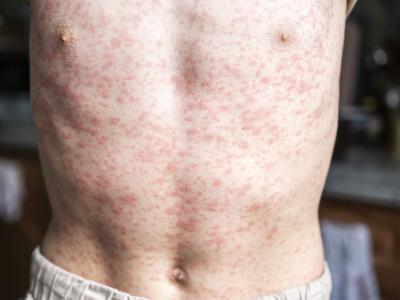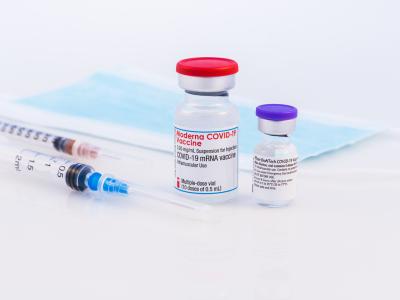The new H7N9 virus linked to China's recent outbreak is well equipped to bind to both avian and human receptors, invade the human lower respiratory tract, and replicate efficiently, a Chinese research team found after putting the virus though its paces in a host of laboratory tests.
The study was one of two reports today that probed the pathogenicity of the H7N9 virus, which could provide health officials with more clues about some puzzling aspects of the disease, including why older people have been hit hardest. In the second study, a group from Hong Kong pitted the H7N9 outbreak strain against other viruses, including H9N2 and H5N1, in a battery of pathogenicity tests using mice.
The two teams said the goals of the tests were to learn more about the pathogenesis mechanisms in H7N9 influenza, which still poses a threat despite a lull in disease activity.
Dual binding abilities
Using tests to gauge hemagglutinin receptor-binding preferences, a team from Chinese central and provincial government agencies found that the novel virus binds to both avian-type and human-type receptors. For comparison, their tests on H5N1 and 2009 H1N1 samples showed, as expected, that H5N1 has a preference for avian-type receptors and the 2009 H1N1 virus has an affinity for human-type receptors.
The researchers, who reported their findings today in a letter to Nature, noted that the increased H7N9 virus preference for human-type receptors might make it more transmissible between birds and humans.
In respiratory tissue culture experiments, the group found that epithelial cells and type 2 pneumocytes in the alveoli were susceptible to the H7N9 virus, with titers in lung tissues that were tenfold higher than in the trachea. They said the pneumocyte replication may lead to deteriorating lung function, as seen with H5N1, and that lower tracheal yields might be a factor that limits human-to-human transmission.
When the investigators examined serum samples from patients who were acutely sick, they found chemokine and cytokine levels that are markers of severe disease.
Disordered chemokine and cytokine response has been implicated in severe H5N1 infections, so the team measured levels of these chemical messengers in the blood of seven patients infected with H7N9 when compared to healthy controls. They found that levels were significantly higher in H7N9 patients, with concentrations and patterns that were similar to patients with H5N1.
The heightened cytokine response might be an important contributor to disease severity in patients with H7N9 infections, the team suggested.
To get a better idea of pre-existing immunity and cross-reactivity to the H7N9 virus, the authors examined 90 stored serum samples from people who were vaccinated against seasonal flu between 2012 and 2013. They measured responses to the H7N9 virus in different age-groups before and after vaccination and found no pre-existing immunity or cross-reactivity in any of the age groups.
"These data demonstrated that the human population is naïve to the H7N9 virus, and current seasonal vaccination does not protect against H7N9 infection," they wrote.
Taken together, the findings and the unpredictable evolution and adaptation of the H7N9 virus show that it poses a risk, and health officials should not underestimate its pandemic potential, the team concluded.
Less pathogenic than H5N1?
In the other H7N9 pathogenicity study, researchers from Hong Kong reported that studies in mice suggest that the novel H7N9 virus is more pathogenic in mice than are H9N2 and an earlier and different H7N9 strain from a duck, but less pathogenic than the H5N1 virus. They published their results in the latest issue of mBio.
The team also found differences in cytokine induction. Higher cytokine levels were seen in mice infected with the H7N9 outbreak strain compared with the duck H7N9 virus or H9N2. However, they were lower than with H5N1.
Surprising findings were that the novel H7N9 strain was not lethal to mice, even at the highest infectious doses, and that it didn't disseminate beyond the respiratory tract.
The group suggested that the findings regarding H7N9 virulence in mice are consistent with the observed pattern in humans, as H7N9 causes severe disease mainly in older people, whereas H5N1 can cause severe disease and death in children and young adults.
Other H7N9 developments
In other H7N9 news today, a perspective piece in the New England Journal of Medicine said the recent H7N9 and Middle East respiratory syndrome coronavirus (MERS-CoV) outbreaks show the strength of digital disease surveillance that uses informal data sources such as infectious disease blogs, message boards, e-mail lists, social media, and news media.
The authors, who hail from Pennsylvania State University and various institutions in Boston, wrote that during the H7N9 outbreak, such surveillance enhanced transparency and helped health officials better understand the spread of the disease. And though little information was available in the MERS-CoV outbreak, the first cases were revealed through ProMED-mail, the online reporting system of the International Society for Infectious Diseases.
Overall, digital disease surveillance assists with a faster response and better understanding of the developments, and the H7N9 and MERS-CoV threats require that the methods be included in the response, the group wrote.
In other developments, an investigation into a possible H7 infection in an American air traveler who was hospitalized in Canada after traveling to China found no evidence of H7N9 in follow-up tests, the Canadian Press (CP) reported yesterday. Initial tests showed that the man had antibodies to the H7 virus, but further tests conducted by the US Centers for Disease Control and Prevention (CDC) didn't confirm the result.
The Public Health Agency of Canada said microneutralization tests run by the CDC also found no H7 antibodies, according to the report.
Gregory Taylor, Canada's acting chief public health officer, told the CP that the test results are considered inconclusive and that labs can get different results from new tests for new viruses. However, Dr Judith Bosse, deputy minister for Canada's National Microbiology Laboratory, suggested that the initial result could have been a false-positive.
The patient is an older man who had traveled to several destinations and got sick during a flight to San Francisco, which prompted authorities to divert the plane to Edmonton. Canadian doctors ordered a series of tests after the man got sick with pneumonia and they learned of his travel history, according to the CP report.
Zhou J, Wang D, Gao R, et al. Biological features of novel avian influenza A (H7N9) virus, letter. Nature 2013 Jul 3 [Abstract]
Mok CKP, Lee HHY, Chan MCW, et al. Pathogenicity of the novel A/H7N9 influenza virus in mice. mBio 2013 Jul 3 [Abstract]
Salathe M, Freifeld CC, Mekaru SR, et al. Influenza A (H7N9) and the importance of digital epidemiology, perspective. N Engl J Med 2013 Jul 3 [Extract]
See also:
Jul 2 Canadian Press story
Jun 27 CIDRAP News scan "Canada investigates H7 findings in American air passenger"




















